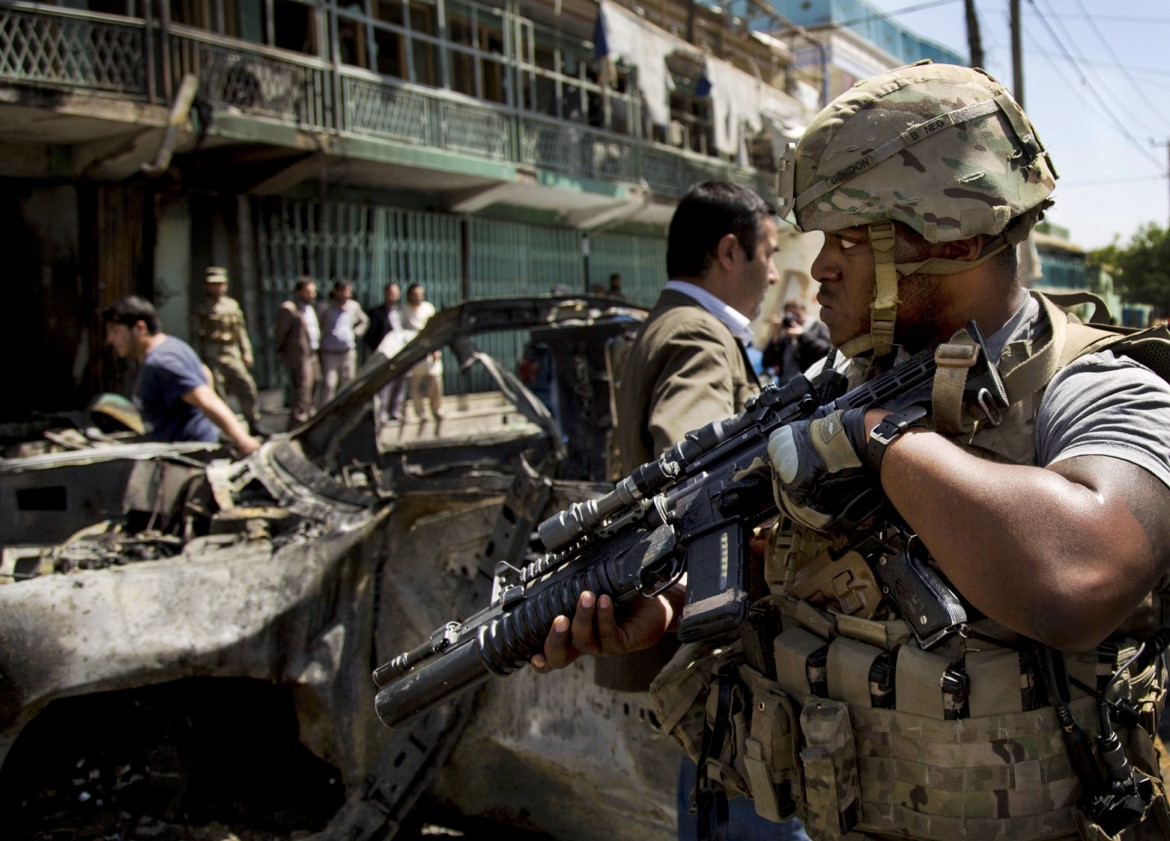The US announcement to unconditionally withdraw its troops from Afghanistan by September marks the end of the so-called global “war on terror”. But war in Afghanistan has not ended — only the US political will to fight it. War in Afghanistan will simply enter a new, bloody phase following the US exit, with far-reaching implications for South Asia.
The manner in which the United States is leaving will hasten Afghanistan’s impending civil wan Major consequences include the Taliban’s tactical ascendance, re-emergence of warlordism, rekindling of ethnic and tribal fissures, reconstitution of the terrorist threat and the reversal of democratic and humanitarian progress post-September 11.
Indubitably, the US staying on in Afghanistan would have been a recipe for more war and the outcome would have been somewhat similar, irrespective of when America left. But the decision for an unconditional withdrawal is creating a triumphant jihadist narrative. Triumphalism that another great power has been defeated in Afghanistan will enthuse a plethora of jihadist groups in South Asia.
Though the terrorist threat to the US homeland and the West does not emanate from Afghanistan — most of it is home-grown or has moved to the Middle East and Africa —it can still become the hub of transnational terrorism.
In 2012, the epicentre of global jihadism moved from Afghanistan to Iraq and Syria. But with the territorial reversals and military defeat of Islamic State in these two countries and the Taliban’s ascendance, Afghanistan can once again become the fountain of jihadism.
Even if the direct terrorist threat to the US and the West does not emerge from Afghanistan, developments there will still shape jihadist narratives, agendas and operational strategies in the Middle East and Africa, and inspire home-grown jihadists.
According to a US intelligence report released this month, al-Qaeda and Isis have been degraded but not defeated. The Taliban is still closely allied with al-Qaeda and seeks its strategic guidance.
Crippled organisationally, al-Qaeda still has tremendous political and ideological influence over most jihadist groups in South Asia, which respect al-Qaeda as the vanguard of global jihadism. For instance, last August, al-Qaeda played a critical role in the reunification of the various factions of the Pakistani Taliban. These factors will allow al-Qaeda to resurrect its organisational structure.
After September 11, jihadists from Kashmir-focused militant groups such as Harkat-ul-Mujahideen, Jaish e-Muhammed and Harkat-ul-Jihad al-lslami joined al-Qaeda following a ban under Pervez Musharraf’s regime in Pakistan.
Pakistan continues to put pressure on such groups under the guidelines of the Financial Action Task Force, a G7 initiative to combat money laundering, including terrorist financing. This may encourage a mass migration to a post-US Afghanistan, where they may join hands with al-Qaeda.
Meanwhile, the Isis franchise in Afghanistan, Islamic State Khorasan Province (ISKP), has proved resilient with tremendous regenerative capacity in the face of a three-fold assault from Taliban, Afghan and US forces. Despite losing territory and fighters, it has stayed relevant by launching high-profile attacks, attracting fighters from Pakistan, India and Central Asia. The post-US chaos in Afghanistan will serve as oxygen.
Afghan security forces are no match for the Taliban, and their ability to stop jihadists from coming is dubious at best. Several thousand Central Asian and Uygur militants who went to Syria to join Isis and Hayat Tahrir al-Sham respectively may return to Afghanistan after the US exit. That could create security challenges for China and Russia, even as the revival of the Pakistani Taliban is ominous for Pakistan.
India is also worried that Kashmiri militant groups may use Afghanistan as a staging ground to launch attacks in Indian Kashmir. Iran, whose Shia militias played a decisive role in taking back territory in Iraq from Isis, is equally concerned about ISKP’s growing presence in Afghanistan.
If Afghanistan slides back into civil war, it will be markedly different from the 1990s. Despite its tactical upper hand, the Taliban lacks the military muscle and numbers to impose a military victory. Regional countries including Pakistan are also opposed to the Taliban’s full return to power. Opportunistic militant groups will be able to exploit the situation.
By announcing an unconditional withdrawal, the US has thrown away its only leverage against the Taliban. The US presence in and exit from Afghanistan was the single most critical factor in shaping a desirable outcome for the Afghan peace process: a power-sharing mechanism to end the war peacefully. Hence, it is unsurprising that the Taliban has refused to join the Istanbul peace negotiations.
In 2001, the US intervention in Afghanistan in response to al-Qaeda’s attack on the World Trade Centre marked the peak of the US-led unipolar world order.
The US responded with full might to terrorism on its soil. Twenty years later, its unconditional withdrawal, without defeating the Taliban, underscores the decline, if not the demise, of US unipolarity.
Historically, Afghanistan has been the agent of change in South Asia. All the great invaders, from the Mongols to the Mughals, passed through Afghanistan to reach the Indian subcontinent. Afghanistan’s geopolitical pre-eminence in shaping developments in South Asia will persist, notwithstanding the US withdrawal.
Whether it is the India-Pakistan proxy battles for regional influence, China’s Belt and Road Initiative to connect Asia with Europe and Africa, or Russian ambitions to export gas to Pakistan and India, Afghanistan is central to them all.
“South China Morning Post”
29.04.21
